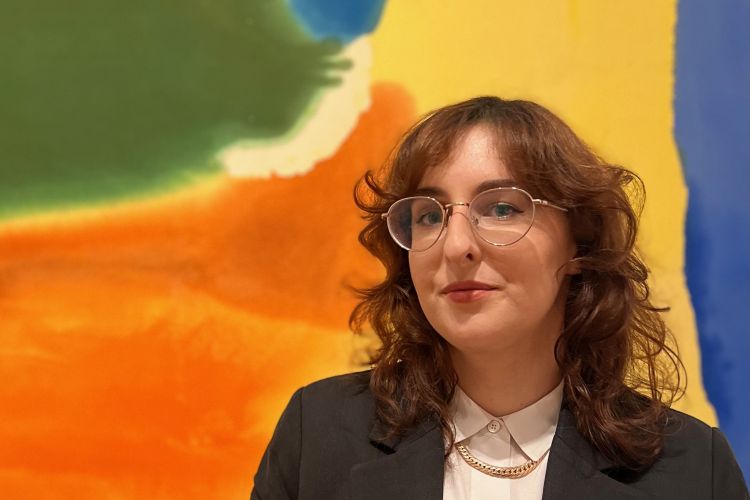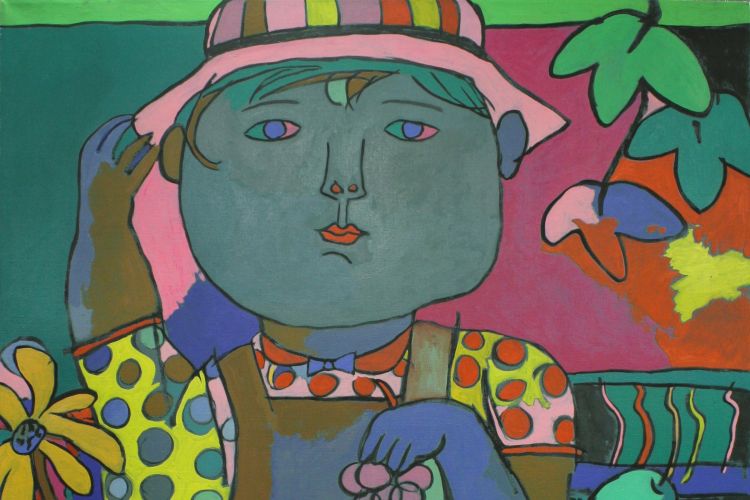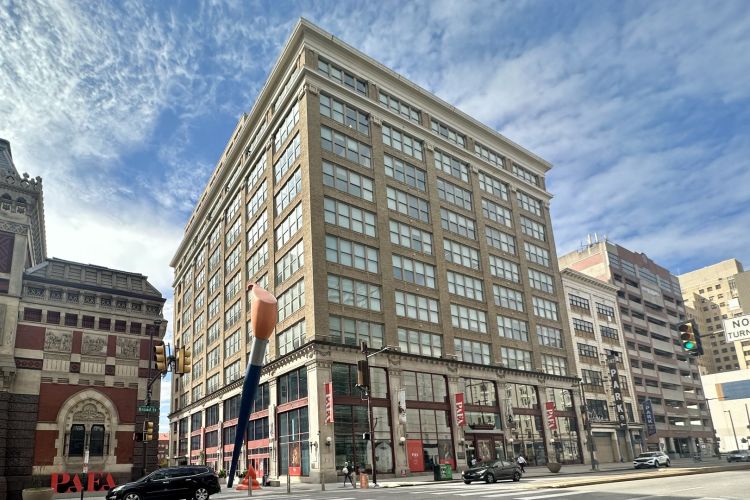PAFA Launches $25 Million Capital Campaign
PAFA Launches $25 Million Capital Campaign
PAFA First campaign to preserve its priceless collections and buildings, enhance growing North Broad Street corridor, increase public engagement with new partnerships and greater access, solidify its commitment to contemporary art
PHILADELPHIA (September 14, 2016) -- The Pennsylvania Academy of the Fine Arts (PAFA) announces the launch of the public phase of PAFA First: For the Future of American Art, a transformative campaign by the nation's first school and museum of the fine arts to enhance its mission and commitment to students, members, visitors, patrons, the city of Philadelphia and the cultural community for many years to come.
The PAFA First campaign has already received $12.7 million in lead gifts from PAFA's Board of Trustees and other donors including the National Endowment for the Humanities, foundations, alumni, and private philanthropists.
"In the past 10 years we have dramatically improved our facilities and programs, but we can't be complacent," notes Kevin F. Donohoe, Board Chairman. "That's why 100 percent of our board have already joined me in committing to this vital campaign. It will continue to propel us to increasingly higher levels, which is critical to assuring that PAFA is -- and remains -- the very best in the American art world."
The $25 million capital campaign will allow PAFA to:
- Significantly expand the school's curriculum and facilities through 40,000 square feet of newly renovated space, adding new studios, a seminar room, and digital labs in support of a new undergraduate program in Illustration that builds upon PAFA's history of launching generations of renowned illustrators from Maxfield Parrish to Kate Samworth; and an innovative Low-Residency MFA program that offers new flexibility to students whose lives and schedules do not fit within a traditional master's degree program;
- Enliven the campus' presence and dramatically contribute to the public-private investment in redevelopment of Philadelphia's burgeoning North Broad Street corridor through façade improvements and amenities;
- Amplify PAFA's commitment to public programming and engagement through a new Community Education Center and a multidisciplinary new Arts Center that will serve as a state-of-the-art venue for seven initial arts organization partners: the City of Philadelphia Mural Arts Program; Philadelphia Chamber Music Society; Black Pearl Chamber Orchestra; Pennsylvania Horticultural Society; Fringe Arts; WURD 900 AM; and New Freedom Theatre;
- Promote scholarship on American art, artists, and culture and provide public access to PAFA's historical resources through a new Center for the Study of the American Artist;
- Increase PAFA's collection storage by 80 percent, to accommodate a rapidly growing permanent collection of contemporary and historical American art;
- Invest in infrastructure upgrades throughout the Historic Landmark Building, designed by renowned architect Frank Furness and considered one of the finest surviving examples of Victorian Gothic architecture in America.
"PAFA is one of the few institutions dedicated to collecting, preserving, and interpreting American art," states David R. Brigham, President and CEO. "PAFA First is the next bold step to ensure that PAFA will continue to innovate in developing the next generation of great fine artists and a public that appreciates American art and culture."
These changes not only will benefit PAFA's visitors and students, they also will create an economic benefit for the city and the state. Construction projects will provide an estimated economic impact of $100 million and support 720 jobs, and the completed project will bring new visitors, activity, and vitality to North Broad Street and the Pennsylvania Convention Center.
PAFA has already begun implementing its Campus Master Plan and has completed several projects:
- Renovated 25,000 square feet of space for the new Illustration Department and the Center for the Study of the American Artist, housing PAFA's archives and a collection of more than 10,000 works of art on paper;
- Built a new Community Education Center in the Historic Landmark Building to support art education programs that benefit thousands of people of all ages, backgrounds, and skill levels annually;
- Created Tableau, PAFA's beautiful new indoor-outdoor café on Lenfest Plaza, already a hub for artists, public servants, local businesspeople, and visitors to Philadelphia through Convention Center pedestrian traffic.
Some of the projects currently underway to bring the campus master plan to fruition and ensure a heightened degree of access and engagement are:
- Establishing a Broad Street Studio to engage visitors with the creative process and increase awareness of the work of PAFA's talented student artists by building a glass-box art studio in the lobby of the Hamilton Building;
- Creating a new Americans with Disabilities Act accessible entrance and restroom in the Historic Landmark Building;
- Replacing the Historic Landmark Building's northeast and southeast skylights, Frank Furness' innovative engineering feats that provided abundant lighting for artists and provided passive ventilation in the years before air conditioning.
PAFA First: For the Future of American Art officially kicks off with a September 14 event on Lenfest Plaza, including remarks from key stakeholders including Philadelphia City Council President Darryl Clarke, project renderings and a video overview of the campaign, and tours of the new facilities.
The capital campaign is honored to have the invaluable support of many of Philadelphia's prominent business, civic, and cultural leaders, including Honorary Chair Marguerite Lenfest, a longtime member of PAFA's board and granddaughter of a PAFA alumnus; Roger H. Ballou, retired CEO of CDI Corp.; Donald R. Caldwell, CEO of Cross Atlantic Capital Partners and PAFA board chair emeritus; Jonathan L. Cohen, retired partner and director of global human resources at Goldman Sachs; Kevin F. Donohoe, PAFA Board Chairman and president of the Kevin F. Donohoe Co. Inc.; William P. Hankowsky, chairman, president and CEO of Liberty Property Trust; Anne E. McCollum; founder of PAFA's Venture Fund; Elizabeth Osborne, renowned painter and PAFA alumna ('58); and Henry B. duP. Smith, vice president, co-chief investment officer and director of Haverford Trust Co.
###
Founded in 1805, the Pennsylvania Academy of the Fine Arts (PAFA) is America's first school and museum of fine arts. A recipient of the 2005 National Medal of Arts, PAFA is a recognized leader in fine arts education with a world-class permanent collection of American art.
We're so excited you're planning to visit PAFA!
Make time for art — visit us Thursday to Sunday.
Before reserving your tickets, please review helpful information about museum hours, accessibility, building access, and special admission programs.
If you have any questions, feel free to reach out to us at visitorservices@pafa.org — we’d love to help!



